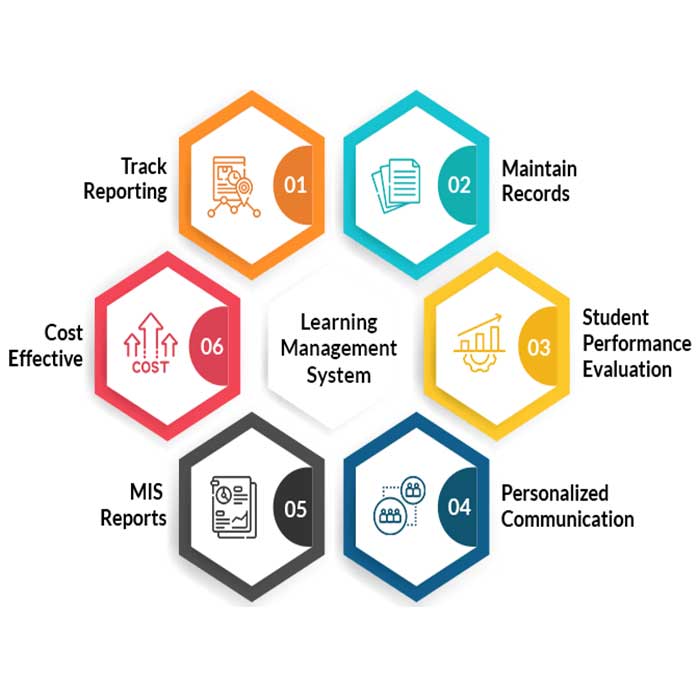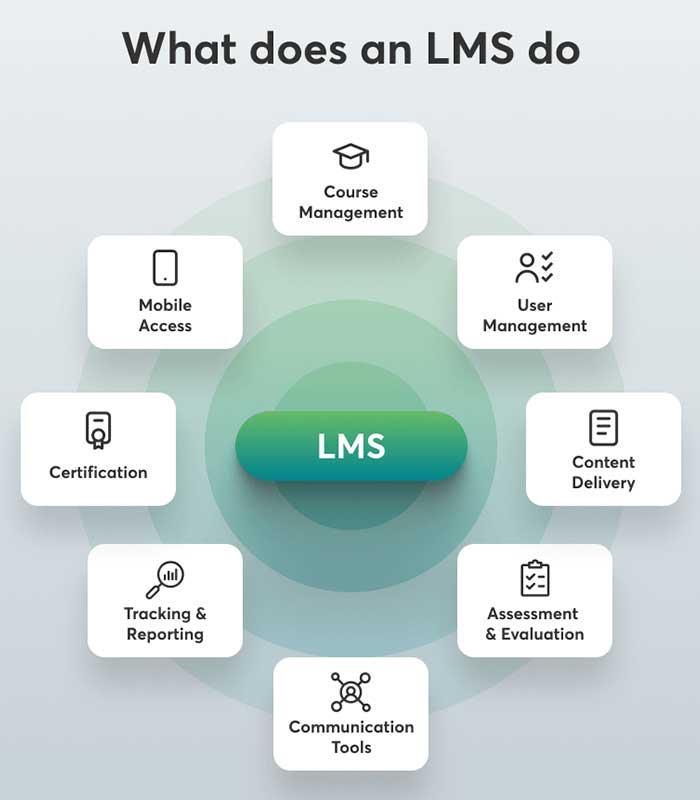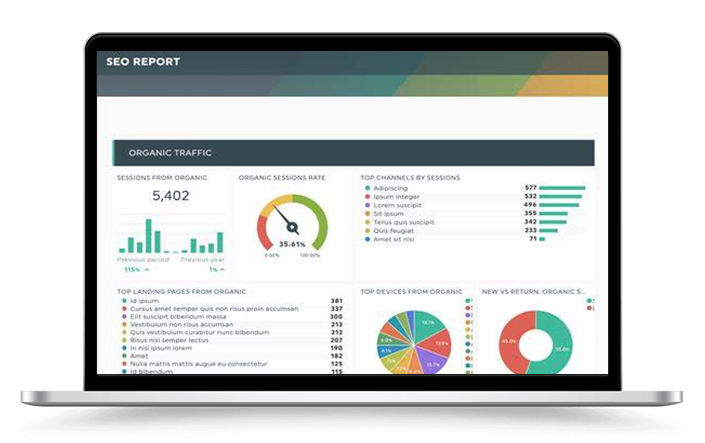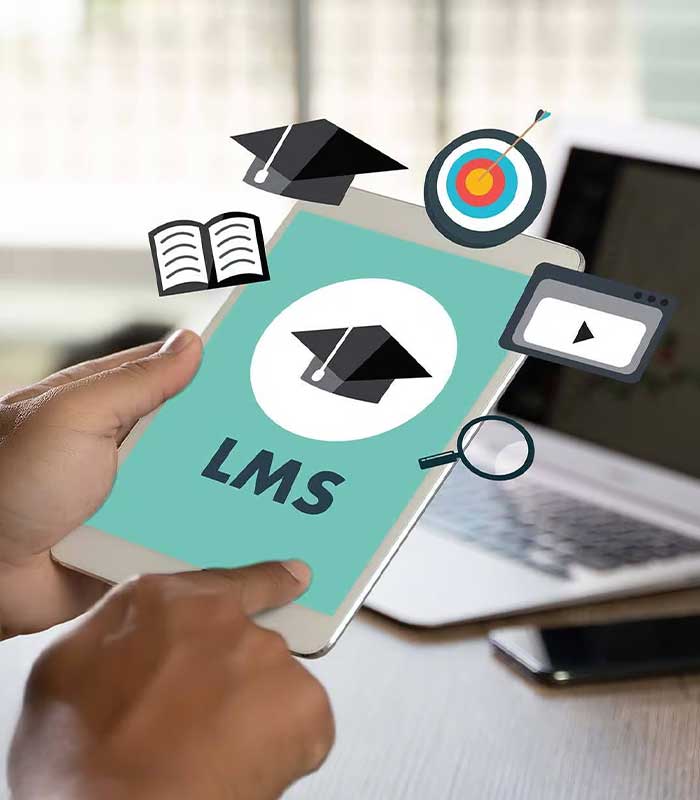Get In Touch
Please fill out the form below if you have a plan or project in mind that you'd like to share with us.
Follow Us On:
Learning Management System (LMS)
Book Demo
What is a Learning Management System?
Evolution of LMS in Education and Corporate TrainingIn today's fast-paced world, mobile compatibility in an LMS is like having your learning companion in your pocket wherever you go. With the rise of smartphones and tablets, an LMS must be accessible on mobile devices, ensuring that students can learn on the go, anytime, anywhere. Whether you're on the bus, at the park, or chilling at home, mobile compatibility makes learning convenient and flexible.
Introduction to Learning Management Systems (LMS)
Defining Learning Management SystemsLet's cut to the chase - the best Learning Management System (LMS) is like a super smart digital hub that helps you manage and deliver online learning content. It's your one-stop shop for creating courses, tracking progress, and engaging learners in a virtual classroom setting. Think of it as the cool, organized teacher's assistant you wish you had back in school.
Key Features and Functions of an LMS
User Management and Roles
User management and roles in an LMS are like the bouncers at a VIP party - they control who gets access to what and ensure everything runs smoothly. By assigning different roles and permissions to users, administrators can manage student access, monitor progress, and maintain the security of the online learning platform.
Reporting and Analytics
Reporting and analytics in an LMS are like having a personal data analyst at your fingertips. These functions allow educators to track student performance, monitor course engagement, and gain valuable insights into the effectiveness of their teaching methods. With detailed reports and data at their disposal, instructors can make data-driven decisions to improve learning outcomes.
Mobile Compatibility
In today's fast-paced world, mobile compatibility in an LMS is like having your learning companion in your pocket wherever you go. With the rise of smartphones and tablets, an LMS must be accessible on mobile devices, ensuring that students can learn on the go, anytime, anywhere. Whether you're on the bus, at the park, or chilling at home, mobile compatibility makes learning convenient and flexible.
What are Learning Management Systems Used for?
Sales Training
Another way LMSes are used is to enhance employee sales skills. This includes the creation of seminars on product knowledge, customer interaction training, and case study-based tutorials that use previous experiences with clients to improve future interactions.
Blended Learning
An LMS provides students with blended learning experiences that combine traditional classroom teaching with online learning tools. This method is more effective than simple face-to-face education because it enriches instructor-led training in the classroom with digital learning content customized to fit a student's learning needs.
Training and Onboarding Processes
Successful implementation of an LMS requires thorough training and onboarding processes for all users. Provide comprehensive training materials and sessions to ensure everyone understands how to use the system effectively.
Trends and Innovations in Learning Management Systems
Personalized Learning Paths
Personalization is becoming increasingly important in LMSs. Look for systems that offer personalized learning paths based on individual preferences, goals, and learning styles to enhance engagement and retention.
Integration of Artificial Intelligence in Learning Management Systems
Artificial Intelligence (AI) is revolutionizing the LMS landscape by enabling adaptive learning, automated assessments, and predictive analytics. Explore LMSs that integrate AI to provide personalized recommendations and enhance the learning experience. In conclusion, learning management systems offer a dynamic and efficient solution for facilitating learning and skill development across various domains. By harnessing the power of technology, organizations, and educational institutions can create personalized learning experiences, improve accessibility, and drive continuous improvement in learning outcomes. As we continue to witness advancements in edtech and the integration of innovative features, embracing learning management systems becomes increasingly vital for staying competitive and fostering a culture of lifelong learning.

Book Your Demo With Our Expert!

How do learning management systems work?
An LMS is a large repository where users can store and track information in one place. Any user with a login and password can access the system and its online learning resources. If the system is self-hosted, users must install the software on their computers or access it through the company's servers.
Responsive design
Responsive design. Users can access the LMS from any type of device, whether it is a desktop, laptop, tablet or smartphone. The system automatically displays the version that best fits each user's selected device and allows users to download content for offline work.
User-friendly interface
User-friendly interface. The interface allows learners to navigate the LMS platform and is customized to the user's and the organization's abilities and goals. An unintuitive interface can confuse or distract users, making the learning management system less effective.
Reports and analytics
E-learning assessment tools and dashboards show instructors and administrators how effective online training initiatives are. Both groups of learners and individuals can be analyzed with these tools and metrics.
Interoperability and content integration
Interoperability and content integration. Content created and stored in an LMS must be packaged according to interoperability standards, including SCORM and the Experience Application Programming Interface (xAPI).
Support Services
Support services. Different LMS providers offer different levels of support. Many offer online discussion forums where users can connect and help each other. Other support services, such as: Additional features, such as a dedicated toll-free number, may be available for an additional fee.
Certification and compliance support. This feature is essential for systems used for online compliance training and certification. It allows instructors and administrators to assess an individual's skills and identify any performance gaps. This feature also allows LMS records to be used during audits.
Social learning capabilities
Social learning capabilities. Many learning management systems integrate social media tools into their learning platforms to allow users to interact, collaborate, and share learning experiences with colleagues.
Gamification
Some LMSes include game mechanics or built-in gamification features that add extra motivation and engagement to courses. This gives students an additional incentive to complete courses, in the form of leaderboards, points, and badges.
Automation
Automation. Learning management systems automate and streamline repetitive and tedious tasks, such as grouping, adding and deactivating users, and handling group enrollments.
Localization
Localization. LMSs often offer multilingual support, removing language barriers in learning and training content. Some LMSs integrate geolocation capabilities, automatically displaying the appropriate version of a course when a user accesses it.
Artificial Intelligence
Artificial Intelligence. LMSs use AI to create a personalized learning experience for users and provide course formats that meet their needs. AI can also help suggest topics that users may be interested in based on the courses they have already completed.
Types of LMS Platforms and Providers
Cloud-based vs. On-premise LMS
When it comes to LMS, you've got options - do you go cloud or keep it old school with on-premise? Cloud-based LMS offers flexibility and accessibility, like learning in your favorite cafe with free Wi-Fi. On the other hand, on-premise LMS gives you control and security, like having your private study room in the library.
Popular LMS Providers and Their Offerings
From giants like Moodle and Blackboard to newcomers like Canvas and TalentLMS, the LMS market is bustling with options. Each provider brings its flavor of features, pricing, and support, so it's like shopping for the perfect pair of sneakers - you want something that fits your style and needs just right.
Best Practices for Using an LMS
So, you've got yourself a fancy learning management system (LMS), but how do you make the most out of it? Here are some tips to rock your online courses:
Effective Course Design and Delivery Strategies Think of your course like a road trip - you need a clear map to guide your learners from point A to B. Keep it organized, interactive, and engaging to prevent them from making a U-turn to boredom town.
Engagement and Collaboration Features Utilization Encourage interaction like a group chat on a Friday night - lively and buzzing. Use discussion boards, virtual classrooms, and group projects to keep learners engaged and channel their inner social butterfly.
Challenges and Considerations in LMS Implementation
Now, let’s talk about the not-so-sunny side of LMS implementation. Brace yourself for these hurdles:
Training and Support Needs
Just like learning to ride a bike, your users may need some hand-holding at the start. Provide ample training and support to ensure a smooth ride on the LMS rollercoaster. Data Security and Compliance Issues Don’t let data breaches rain on your e-learning parade. Protect sensitive information like your grandma's secret cookie recipe by ensuring your LMS is as secure as Fort Knox.
Future Trends in Learning Management Systems
Integration of Artificial Intelligence and Machine Learning Imagine having a virtual teaching assistant that knows your students better than you do. AI and machine learning will personalize learning experiences and make your LMS feel like it has a PhD in student psychology.










